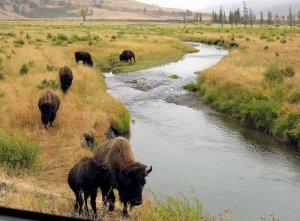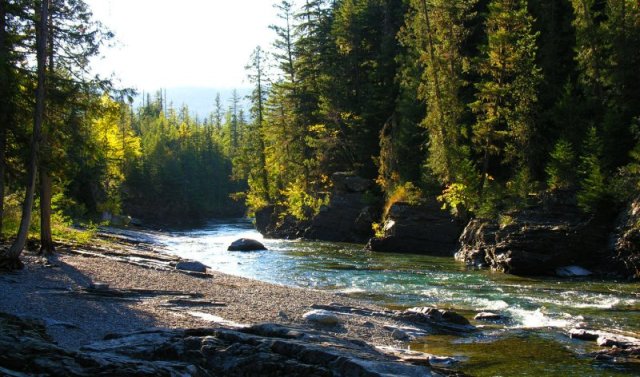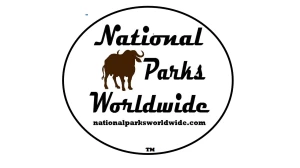World National Parks For Information On The National Parks Of The World And Their Wildlife.
 Yellowstone National Park was created in 1872 by the United States and was the world’s first national park. Australia created the Royal National Park seven years later. Canada was also a pioneer in establishing national parks. In 1885, Banff National Park became Canada’s first national park. In 1911 Canada established the world’s first national park service and today Canada has one of the world’s most extensive systems of national parks and protects more acres of land in this national park system than any other country in the world. The largest national park in the world is the Northeast Greenland National Park created in 1974 by the Danish government that is responsible for Greenland. The Northeast Greenland National Park provides a sanctuary for musk oxen, polar bear and walrus.
Yellowstone National Park was created in 1872 by the United States and was the world’s first national park. Australia created the Royal National Park seven years later. Canada was also a pioneer in establishing national parks. In 1885, Banff National Park became Canada’s first national park. In 1911 Canada established the world’s first national park service and today Canada has one of the world’s most extensive systems of national parks and protects more acres of land in this national park system than any other country in the world. The largest national park in the world is the Northeast Greenland National Park created in 1974 by the Danish government that is responsible for Greenland. The Northeast Greenland National Park provides a sanctuary for musk oxen, polar bear and walrus.
Governments throughout the world have generally become more aware of the threat to the earth’s wildlife, particularly to the wildlife in their respective countries. As a result, these governments have established national parks to conserve the tremendous wealth that wildlife represents for tourism today and in the future. Today there are more than 6,000 national parks in nearly 100 countries that support wildlife conservation and ecotourism.
National parks are usually created to protect something unique. This could be rare flora, exotic wildlife, great biodiversity, sensitive ecosystems, distinctive geologic features, or combinations of any of these. For example the Sagarmatha National Park, in Nepal, has a distinctive geologic feature, Mount Everest (Sagarmatha is the Nepali name for the mountain). However, the Sagarmatha National Park contains a large area around the mountain that is also home to many endangered species such as the snow leopard and red panda. Sagarmatha National Park is a UNESCO World Heritage Site that protects some very important animals, as well as, a famous world landmark and unique geologic feature.
The creations of national parks has been a very important step towards the preservation of the world’s natural resources and the conservation of wildlife. However, the national park solution has its own set of issues that must still be dealt with. Although national parks are important protectors of our natural resources many national parks lack the money and staff to use these natural resources to their fullest. This is especially true in poorer countries, but can also be true for some national parks in the United States and other developed countries.
In many cases, national parks have been established as “islands” within developed lands and in the future as human beings develop more and more land around national parks this isolation may increase. However, often times the wildlife of a national park do not recognize park or country borders so it is important that larger ecological wildlife corridors be established and maintained to include the lands outside of parks, to ensure that many species of wildlife will survive in the future. Many governments have already begun to address this issue and are establishing wildlife corridors. Also, governments of different countries are beginning to work in cooperation to achieve conservation objectives. There are several examples in the world where countries have national parks that are contiguous with national parks in neighboring countries to provide larger overall areas of protection for their wildlife. A prime example of this exists in Africa where the three countries of Benin, Niger and Burkina Faso each have a section of the W National Park in their respective country. The United States and Canada have contiguous national parks on their border. Glacier National Park in the United States borders the Waterton Lakes National Park in Canada. The two national parks are collectively known as the Waterton-Glacier International Peace Park, the world’s first International Peace Park created in 1932.
Another important issue for today’s national parks is the visitor experience. There are several aspects to this issue. The most important is the impact of the visitor on the national park and the natural resources that it is meant to protect. As national parks become more and more popular the number of visitors increases. As the number of park visitors increases the traffic can have a negative impact on the national park’s flora and fauna. Ironically, as the number of visitors increases it can also have a negative impact on the visitor experience itself. Watching a black bear while standing among hundreds of other park visitors, many of whom are snapping photographs or cheering the bear on, is quite a different experience from sighting the bear while hiking on an isolated trail my yourself. A prime example of this is Yosemite National Park. One of the most popular national parks in the world, Yosemite already faces overcrowding issues that challenge the balance between open access and maintaining the park’s natural environment.
National parks are precious resources for all the people of the world. National Parks Worldwide is a resource for anyone who wants to learn more about the national parks of the world. Currently National Parks Worldwide is emphasizing information about the wild animals and geography of the world’s national parks. When possible National Parks Worldwide provides a virtual tour of the national park using video clips, as well as additional information and photographs of the national park, its wildlife and its flora. National Parks Worldwide is striving to become your one-stop site for information about each of the national parks of the world.
Best National Parks of the World – Africa



